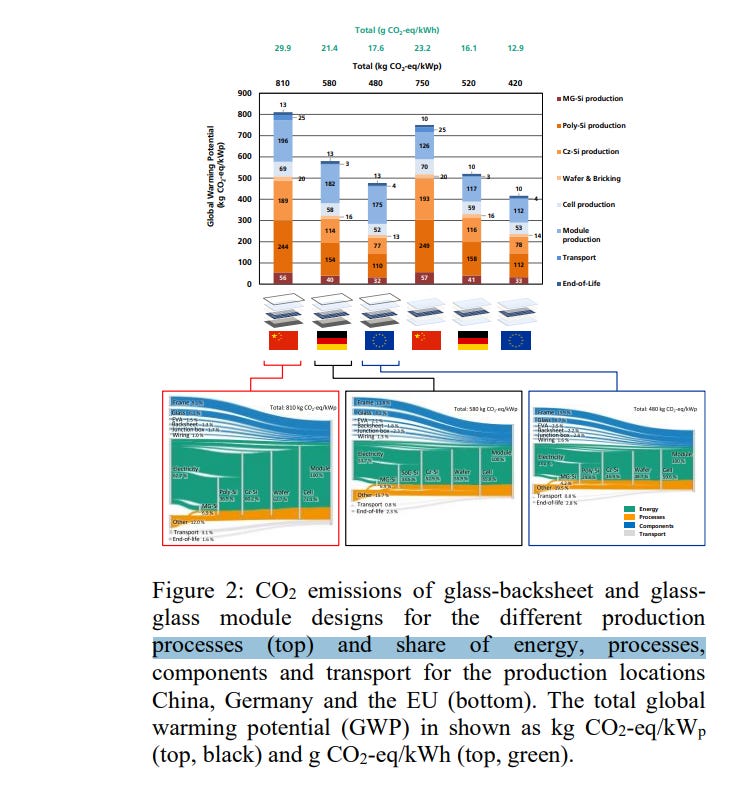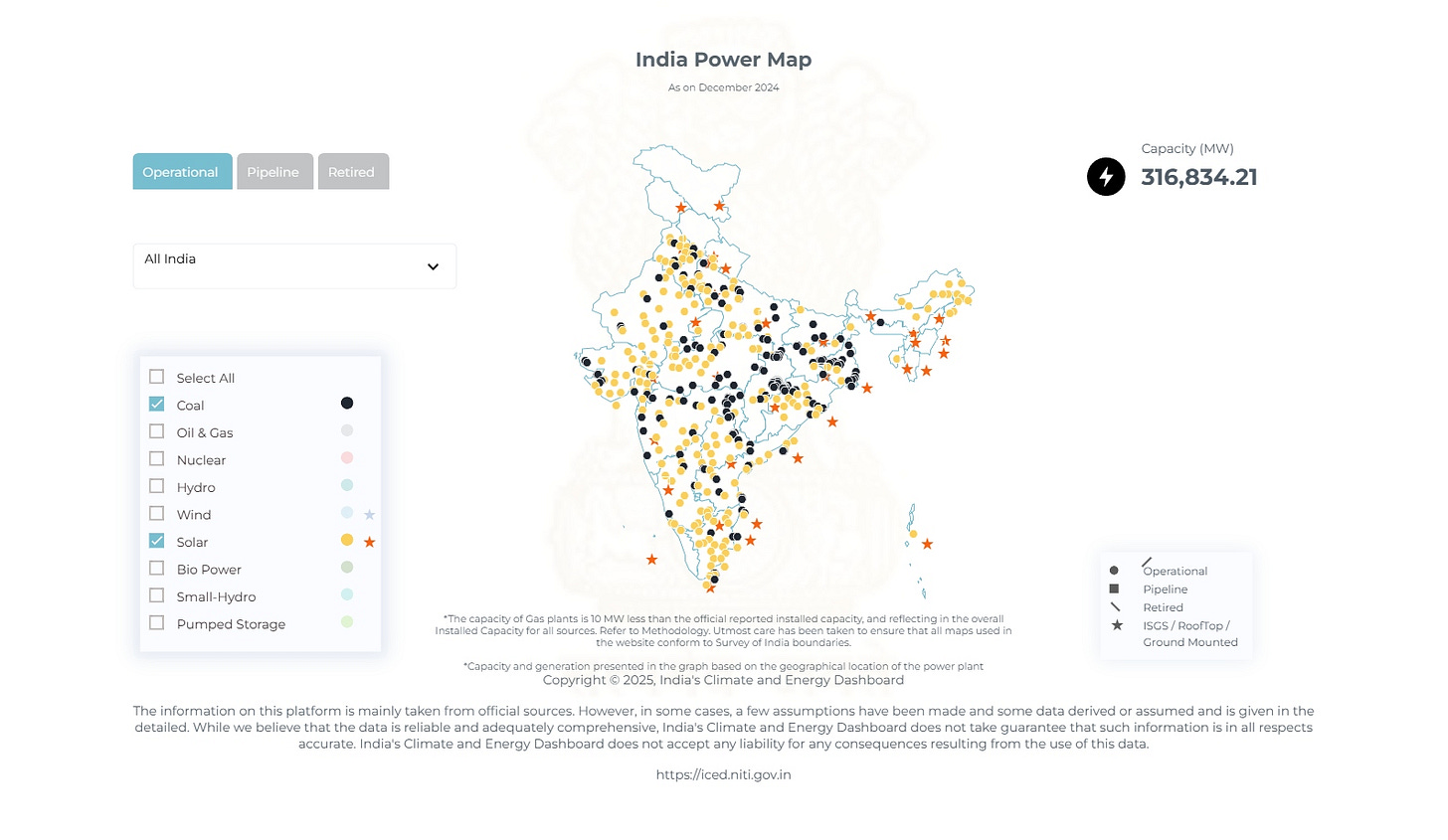How Clean Is Solar? The Real Carbon Footprint of Going Solar
Solar Panels might be a better alternative for power generation but at the back - end they do contribute to emissions. Read the full story to know more
The previous edition talked about the overall lifecycle of a solar module - From mining to recycling. In this edition, we’re diving into something that often gets overlooked—solar panels’ carbon footprint during manufacturing.
Sure, once they’re up on your roof, they generate clean energy. But before that, there’s a bit of a carbon cost. From mining the materials to making the panels, the process releases emissions. Glass, aluminum, and silicon are just a few of the culprits.
But don’t worry, we have broken it all down for you.
The good news? Solar panels still come out ahead in the long run. Even though there’s some carbon involved in their production, the clean energy they generate over time more than makes up for it.
So, while solar isn’t completely emissions-free, it’s a huge step in the right direction.
We’ll also compare how solar stacks up against fossil fuels, especially coal, and why solar remains one of the best options for a cleaner future.
Understanding How Solar Saves Carbon: Key Factors to Consider
To assess the carbon savings potential of solar energy, several key players are taken into consideration:
Grid Carbon Intensity
Energy output of the Solar System
Life-Cycle Carbon Footprint of the Solar Panel
Grid carbon intensity measures how much CO₂ is emitted for every unit of electricity generated in a specific area.
Think of it as the carbon “footprint” of the electricity your home or business relies on.
In India, the grid carbon intensity from coal-based power plants is approximately 1.01 kilograms of CO₂ per kilowatt-hour (kWh).
Compare that to solar-based power generation, which emits a fraction of that amount during its operational life. This makes solar a game-changer for reducing emissions in a coal-heavy grid.
In India’s industrial sector, a 1 kW solar system typically generates around 4–5 kWh of electricity per day under ideal sunny conditions.
While that might seem modest, think of it as a single soldier in a much larger army.
Scale that up to a 700 kW solar system, and you’re looking at a system that can offset approximately 790 tonnes of CO₂ emissions annually.
While much of the focus is on the electricity solar systems produce, it’s important not to overlook the life-cycle carbon footprint—the emissions tied to the entire journey of a solar panel, from raw material extraction to final installation.
Each phase of this journey carries its own carbon price. This makes it important to understand the road taken by the solar modules.
Once panels are up and running, though, the electricity they generate produces virtually no carbon emissions, making them a powerful long-term solution.
By calculating the life-cycle emissions and subtracting them from the emissions avoided through clean energy generation, you get a clearer picture of net carbon savings over time.
Solar's Carbon Footprint : From Mining to Manufacturing
Solar panels are a marvel of clean energy, but let’s not forget the emissions that come with their manufacturing.
The biggest contributor is glass, which forms most of the solar module. For a 1 kW solar panel, you need about 54–60 kg of glass. Manufacturing this glass emits 77–86 kg of CO₂. That’s a significant chunk right off the bat.
Next up is aluminum, used for the sturdy frame. Producing 10–14 kg of aluminum releases 208–292 kg of CO₂. Yes, aluminum is lightweight and durable, but it’s energy-intensive to produce.
Silicon, the heart of the solar cell, adds another layer of emissions. With 3–5 kg of silicon used per panel, it contributes 15–25 kg of CO₂. Copper and silver, though used in smaller amounts, aren’t off the hook either. Copper adds 2–4.5 kg of CO₂, while silver, being energy-intensive to refine, emits 10–15.6 kg for just 20–30 grams.
All in all, manufacturing a 1 kW solar module releases about 600 kg of CO₂. This includes everything from raw materials to assembly and even recycling considerations.
Compared to coal, the numbers are still striking. Coal-based power emits 500–600 kg of CO₂ per MWh, whereas solar panels, even with manufacturing, only account for 21–29 kg per MWh. Over time, solar panels not only pay back their carbon footprint but also become a cleaner, greener way to power our lives.
Indian Context of Emissions : Looking into our homes
India is one of the world’s largest CO₂ emitters, ranking third after China and the United States. Over the years, its reliance on fossil fuels, especially coal, has driven emissions to staggering levels.
In fact, coal accounted for 72% of India’s CO₂ emissions from fuel combustion in 2022. With a growing economy and rapid industrialization, electricity demand has soared by around 9% annually in recent years, pushing emissions higher.
However, India’s carbon intensity of energy production is 0.28 kg of CO₂ per kWh—an indicator that efforts to decouple emissions from energy output are underway.
The Indian government is taking noticeable steps to reduce its carbon footprint and modernize its energy grid.
Many old, inefficient coal plants have been retired, and newer, more efficient supercritical and ultra-supercritical units are replacing them. These advanced plants emit less CO₂ per unit of electricity.
Additionally, biomass co-firing, where agricultural residues are burned alongside coal, is helping lower emissions from thermal power plants. Programs like these show how India is finding ways to tackle emissions while still meeting its energy demands.
On the renewable energy front, India is making remarkable progress. By December 2024, its renewable energy capacity had grown to 209.44 GW, a significant jump from the year before. Solar power is leading the charge, with capacity climbing by 33.47% in just one year. Wind energy is also expanding steadily. This growth is helping India lower the carbon intensity of its grid—a reduction of 9% between 2013 and 2023 is proof that things are moving in the right direction.
Looking to the future, India has ambitious goals. The country is aiming for 500 GW of non-fossil fuel capacity by 2030 and is committed to achieving net-zero emissions by 2070.
As part of its international climate commitments, India also plans to reduce the emissions intensity of its GDP by 45% from 2005 levels. Programs like the “LIFE” initiative are encouraging sustainable living, complementing large-scale energy transitions with behavioral change.
While these efforts are promising, challenges remain. Financing renewable projects, improving energy storage for solar and wind, and reducing dependence on coal will require innovative solutions and strong policies.
Still, with its blend of ambitious targets and practical measures, India is making strides toward balancing development with sustainability. It’s an uphill climb, but the progress is undeniable.
Comparison Between Electricity Generation from Coal vs. Solar
Coal and solar power are worlds apart when it comes to emissions. Coal-fired power plants in India emit a hefty 1010–1350 gCO₂eq. per kWh during operation. Compare that to solar, which only generates 16–57 gCO₂eq. per kWh over its entire lifecycle.
And during operation? Solar is squeaky clean with zero emissions. That’s a staggering difference—coal emits up to 84 times more greenhouse gases per kWh than solar.
Coal's reliability lies in its ability to be stockpiled on-site, ensuring a steady fuel supply and grid stability. Integrating technologies like thermal storage enhances flexibility, but coal itself acts as stored energy due to its stockpiling capability.
Energy storage ensures consistent solar power supply by storing excess energy for use during low-generation periods, addressing solar's intermittency.
Yet, coal still dominates India’s energy mix, making up 70% of electricity generation. Even though renewable energy is projected to take the lion’s share—68.4% by 2031–32—coal isn’t going anywhere just yet. India’s growing energy needs make a complete transition to renewables tricky. Balancing economic growth and sustainability? That’s the challenge.
On the bright side, solar energy is gaining momentum. Private investment in coal is drying up as banks and institutions adopt coal exclusion policies. Even India’s own Reserve Bank is pushing for climate-related disclosures, nudging lenders toward greener financing. But for now, public sector banks and national institutions still carry the weight of coal financing.
The road to net-zero by 2070 isn’t going to be easy. It’s a balancing act—phasing out coal while ramping up renewables like solar. The good news? With solar power’s clean, low-emission footprint, it’s a game-changer for India’s energy future. Now it’s just about making the leap.
Conclusion
India is making big strides toward cutting emissions, but the path isn’t without challenges. While renewable energy capacity has grown rapidly, its actual integration into the power grid hasn’t kept pace. From 2016 to 2022, renewable energy’s share in electricity generation grew by just 6.5 percentage points. Clearly, building capacity is only half the battle—making it work efficiently is just as important.
To bridge this gap, India has a few promising strategies. Dynamic time-of-use (ToU) electricity tariffs can help shift energy consumption to align with when renewables are most available. Plus, the push to develop a strong, interconnected national grid is critical. With plans to integrate 500 GW of renewable energy by 2030, the groundwork is being laid to bring power from remote areas straight to where it’s needed most.
Energy storage is another game-changer. Technologies like Pumped Hydro Storage and Battery Energy Storage Systems are evolving fast and could stabilize the renewable energy supply. Even coal power plants might play a role by operating flexibly to balance renewables. While challenges remain—technical upgrades, financial costs, and reworking contracts—India’s focus on innovative solutions shows it’s serious about building a greener, more reliable energy future.
What is your key takeway with edition, tell us we would love to hear from you!












